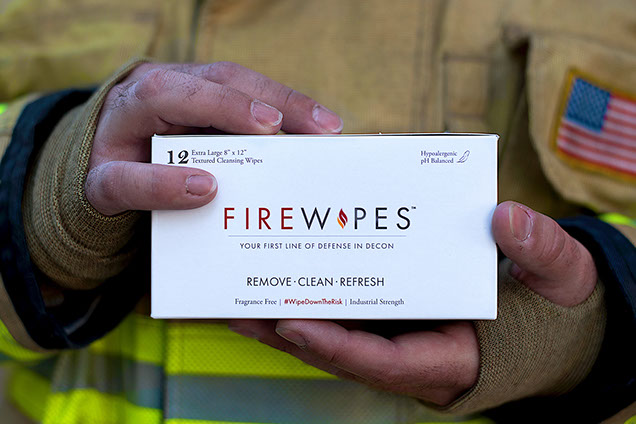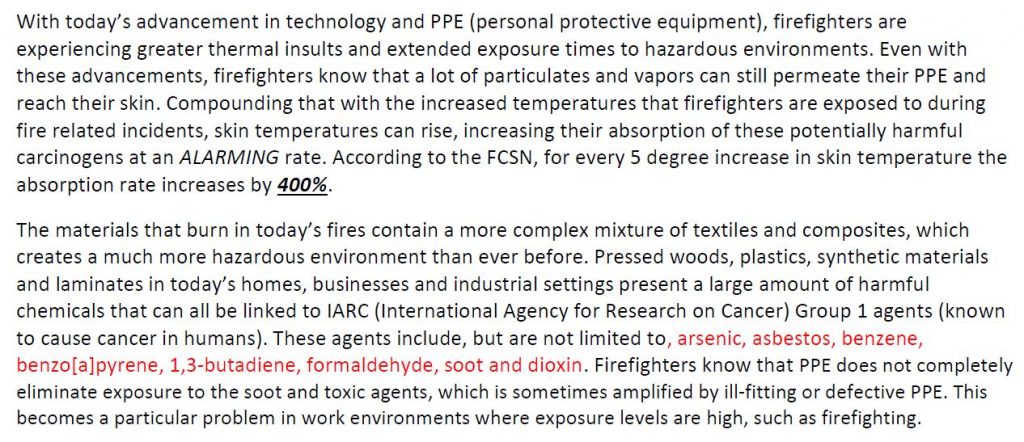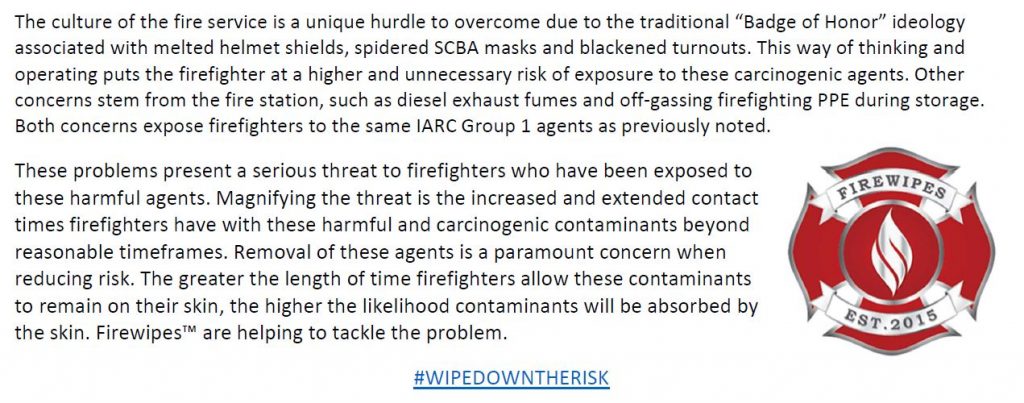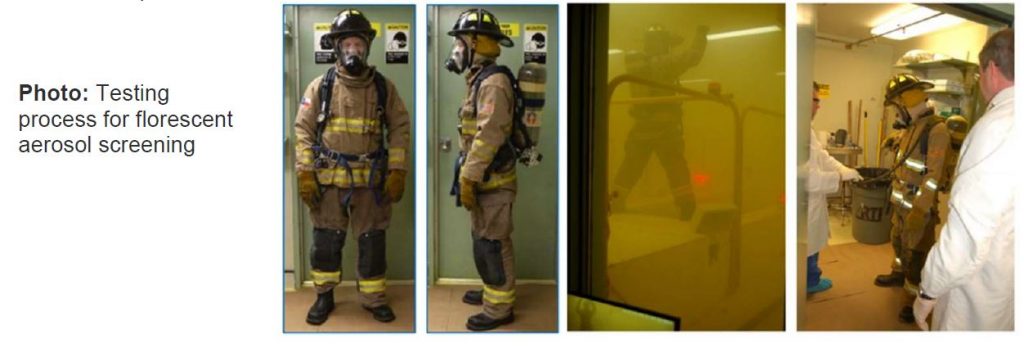
Ingredients and Directions of Use
Firewipes® is dedicated to providing our customers with a quality product that contains only quality ingredients. Great care and consideration went into the formulation of firewipes to ensure there were no harsh detergents, drying agents and/or carcinogens added. this makes them safe to use on all external dermal areas to aid in the cleaning and removal of soot and other potential carcinogens.
Firewipes products also meet all U.S. FDA regulations and are manufactured under cGMP, ISO9002, ISo14001 and EcoCert. this ensures the safety consistency of each products.
Firewipes are.....
- Alcohol Free
- Latex Free
- MI Free
- Paraben Free
- SLS Free
The suggested use of the Firewipes® to perform personal gross decon is:
- Expand the wipe to its full 8"x 12" size to maximise the cleaning surface area .
- begin cleaning the more permeable skin area such as the neck thraot jaw and face.
- While cleaning these areas also be sure to clean the areas around your eyes, ears and nose.
- continue to other exposed areas such as the hands, wrist, lower extremities and groin
- Discard properly after sue. Never flush in toilets or porta-potties
The Problem



Personal Carcinogenic Exposure Reduction Steps: PCERS “The Dirty Dozen”
1. Use your SCBA from the initial attack through the end of overhaul. These incidents include structural fires, car fires, dumpster fires, debris fires, live training fires, etc. (Not wearing an SCBA in both active and post-fire environments is the most dangerous voluntary activity in the fire service today.)
2. Perform gross decontamination of all firefighting PPE and SCBA's prior to leaving any fire incident. This decontamination can be accomplished by utilising an air hose or a red line. (This equipment includes gloves, helmets, tools and SCBA Masks)
3. Use disposable wipes or similar methods to help remove soot and other potential carcinogens from all exposed dermal areas. This should be performed as soon as possible and before leaving the fire incident scene. (These areas include the neck, throat, jaw, face, hands, wrists, lower extremities and groin)
4. Utilise the Hood Exchange Program after an exposure. (Add locations of such equipment)
5. Clean and decontaminate fire apparatus interior after fires. (Don’t wait until the next rig day)
6. Bag up exposed turnouts to be picked up and cleaned. (Remember to perform gross decontamination of PPE before bagging it up)
7. After a fire take a thorough shower and put on a clean uniform.
8. Do not take contaminated clothes or PPE home or store them in your vehicle. (Contaminated clothing and PPE can continue to off gas and cause extended exposures)
9. Submit hazardous exposure reports, both electronic and hard copy formats.
10. Never wear or store bunker gear in living or sleeping quarters.
11. Use sunscreen whenever possible to help block UV ray exposure.
12. Stop using tobacco products.



